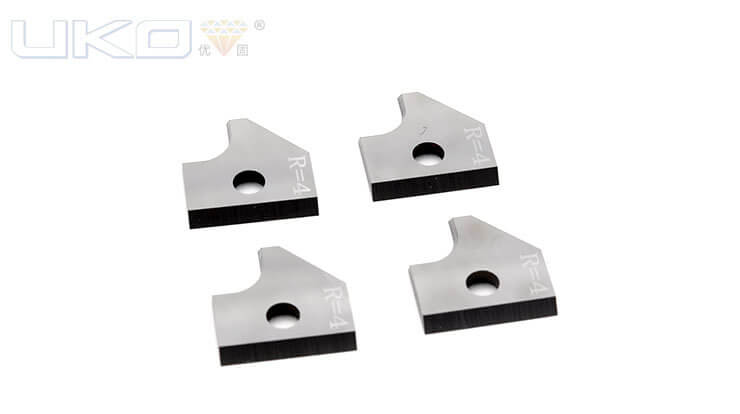
The quality of the material composition of woodworking tools is an important factor that determines the service life of the tool, so the tool materials we use need to meet the following conditions:
- Certain hardness: Usually the hardness is HRC44~62, HRC is above 44 at 300℃, and the thermosetting is good.
- High wear resistance
Abrasion resistance refers to the ability of a material to resist friction and wear. The nature, number, size and distribution of hard spots in the material structure all have an impact on the wear resistance. The level of tool wear resistance affects the life of the tool and the efficiency of the machine tool.
- High thermal hardness
Thermal hardness means that the tool material works under high temperature conditions and still maintains its high hardness performance; the thermal hardness directly affects the cutting performance of the tool, especially the high-speed woodworking cutting of the tool.
- A certain degree of craftsmanship
In order to facilitate tool manufacturing, tool materials are required to have good manufacturability, including forging, rolling, welding, machinability, machinability, grindability, and heat treatment characteristics.
- Other special requirements
The main components of tool materials
In modern woodworking tool materials, in addition to the carbon element of diamond, other materials are inseparable from carbides, nitrides, oxides and borides. These compounds all have high hardness, high melting point, and high elastic modulus, which are the main properties required by tool materials. For example, carbon tool steel, the main component is Fe3C, which is cementite; while alloy tool steel has composite carbides, such as alloy cementite (Fe, Cr) 3C, etc.; high-speed steel has more composite carbides ; The hard spots in the cemented carbide are mainly WC and TiC, and the others are binders, such as Co and Ni; the matrix of ceramic tools is commonly used in Al2O3 and Si3N4; cubic boron nitride is a non-metallic nitride. Diamond is an allotrope of carbon. It is currently the hardest and most wear-resistant tool material known. Especially when cutting non-ferrous metals, non-metal composite materials such as wood-based panels with high glue content, and reinforced floors with wear-resistant materials on the surface, the effect is significant, and the wear resistance can be 100-300 times higher than that of cemented carbide.
The disadvantage is that it is more sensitive to impact, so the machine tool and tool operation stability requirements are higher. The cost of polycrystalline diamond PCD is 30-50 times higher than that of cemented carbide tools, and can only be sharpened by a special method (electric corrosion), so you should be more careful when using it. Diamond tools cannot be used to cut iron group metals, because diamond is easily converted into graphite due to the presence of iron at high temperatures.
Hope this information is helpful to everyone!